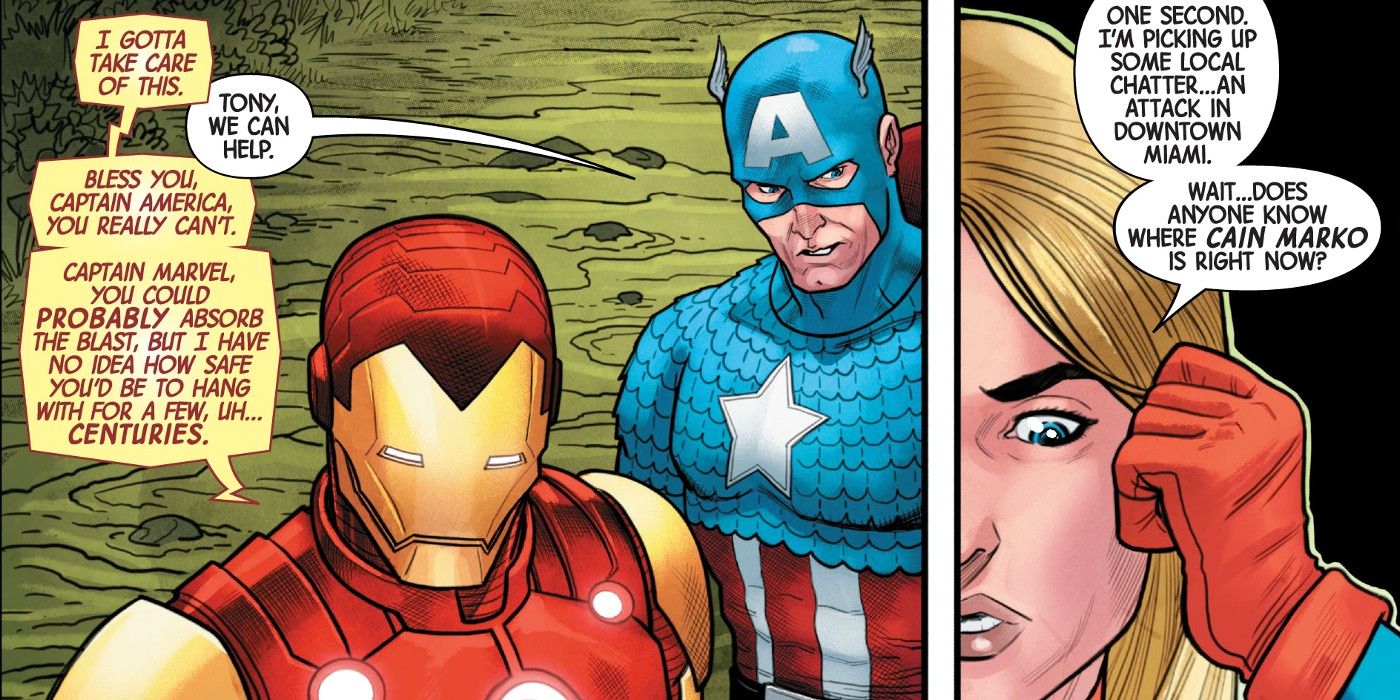Warning: contains spoilers for Death of Doctor Strange: Avengers #1!
The recent one-shot comic Death of Doctor Strange: Avengers #1 confirms that the hero Captain Marvel is powerful enough to survive the blast from a nuclear bomb. The Captain’s fellow Avenger, Iron Man, suggests as much in the issue when the team encounters a nuclear warhead set to detonate in the Florida Everglades.
In the aftermath of the murder of Doctor Strange in The Death of Doctor Strange #1, by Jed Mackay and Lee Garbett, the mystical barrier maintained by the Sorcerer Supreme - designed to protect the earth from multi-dimensional invasions - has collapsed. Seeing an opportunity, warlords such as Aggamon and Tiboro have immediately settled on the planet with their forces. Death of Doctor Strange: Avengers #1, by Alex Paknadel and Ryan Bodenheim, reveals that a team of “delegates” from these warlords have been sent to the Florida Everglades with the mission of using a stolen nuclear bomb to destroy the Nexus of All Realities, to make sure no more interdimensional refugees can use up Earth’s finite resources. However, once Captain Marvel and her fellow Avengers arrive in the Everglades, they find the delegates dead but the bomb’s timer already ticking.
It is here that Iron Man immediately takes charge, stepping in to disarm the bomb. After a characteristic sly dig at Captain America, Tony does admit that Carol Danvers “could probably absorb the blast.” Marvel fans will be aware that one of Captain Marvel's most useful powers is the ability to absorb energy; processing it and transforming it to use as she chooses. However, it's rare that Marvel implies an upper limit to her abilities, so it's fascinating that Tony - who has carried out extensive study of Carol's abilities - believes she could just about withstand a nuclear explosion, albeit with a catch.
Tony states the bomb is an old Soviet era device from the '70s, so it can be assumed it has an explosive yield close to the soviet’s 'Tsar Bomba' detonated in 1961, which was fifty megatons; roughly equivalent to 3,800 Hiroshima bombs detonated simultaneously. This isn’t exactly something to sniff at, but Tony does follow up by saying that while she would contain the explosion, he doesn’t know "how safe you’d be to hang with for a few, uh... centuries."
This means that while Carol would be able to absorb the radiation from the bomb and survive, the decay of the radionuclide would continue. Carol would end up being too radioactive for regular humans to be around safely for centuries due to the long half-life of most radioactive material. This suggests that Captain Marvel’s powers are limited in that, while she can absorb the radiation alongside the explosion, she is unable to transform the radiation in the same way she can other forms of energy. It's a surprising limitation for one of the Marvel Universe's biggest powerhouses, but Carol doesn't disagree.
While Iron Man confirms Captain Marvel is probably powerful enough to survive the blast from a nuclear bomb, it is interesting to learn that even one of Earth’s strongest Avengers still has limitations to her powers. To see if Captain Marvel and her fellow heroes are powerful enough to continue to defend the earth in the wake of Doctor Strange’s murder, readers will have to pick up The Death of Doctor Strange #3 on November 24.


